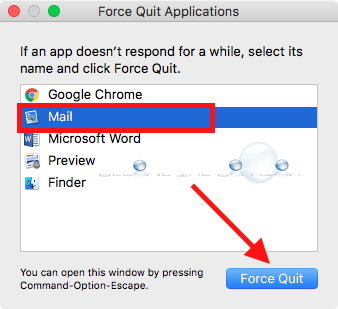

Here are some ways to quickly close running apps on your Mac. It’s better to quit those apps running in the background or apps that you no longer use.
:no_upscale()/cdn.vox-cdn.com/uploads/chorus_asset/file/22701875/Screen_Shot_2021_07_06_at_12.03.03_PM.png)
Many of you minimize the apps for later use, but since they are running in the background, it uses your system resources which may slow it down. In our example, the exception was Spotify.Running apps take up a lot of memory and slow down your Mac. The best part of all is that you can fine tune it by adding exceptions. With this you have created a new app with a single purpose: to quit all apps.

If you have tried all the above without success, you can always turn to Terminal and type the following command: Use Terminal: this may be the preferred method for advanced Mac users, but it's easy to get used to once you have got the taste for working with Terminal.Launch Activity Monitor if you haven't already done so and, in the CPU tab, select the process that is using most of the processor's resources and click the “Quit Process” button. Use Activity Monitor: if you keep an eye on your Mac's resource hog, Activity Monitor is the best tool to spot unresponsive apps and quit them.This isn’t the most effective method, however, as unresponsive apps may have inaccessible menus. From the Apple menu: hold down the Shift key while clicking on the Apple menu, and you'll see “Force Quit in the drop down menu.Use the Option + Right Click trick on the targeted app's dock icon to bring up the “Force Quit” option, and select it to kill the app.You might need to hold down those keys for a second or two. An advanced version of the key combination without bringing up the aforementioned window: hit Command + Option + Shift + Escape.Use a keyboard shortcut: hit Command + Option + Escape to bring up the “Force Quit Applications” window, and select the faulty app.Six Ways to Quit an App in Any Version of macOS That option disappears when you force the app to quit, similar to choosing “End Task” in the Control Panel after pressing Control + Alt + Delete on a PC. A normal closure of the app will display a prompt (if needed) to save any changes you have made and will quit only after answering this prompt. To quit (close) the app, you simply need to press Command + Q to choose Quit from the app's menu in the menu bar. The Difference Between Quit and Force Quitįorce Quit is usually used to close an app that has stopped responding completely and prevents quitting the app normally.
#How to force close on mac os how to#
Luckily there is a very simple way to force-quit all apps, and in fact we can even show you how to quit apps in six different ways. Are you seeing the infamous spinning beachball of death? Has an application become unresponsive and needs to be closed? There could be too many processes running at once, or you have not one but two or three problematic apps that are putting too much pressure on your hardware.


 0 kommentar(er)
0 kommentar(er)
